Search
Hotel Name
Location
Heraklion Hotels, Heraklion Crete Island Hotel Directory

Hotel Name
Location
GreekHotels > Crete
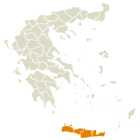
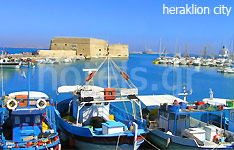

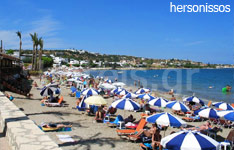
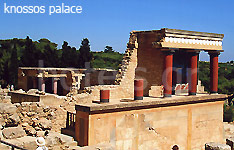
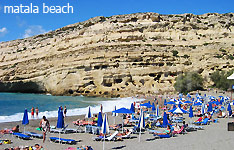
Information About Heraklion Archaeological Sites
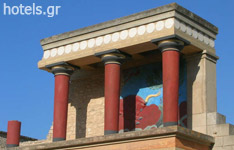
The Royal Palace of Knossos is the largest of the Minoan period; a building complex covering an area of 22,000 sq m situated 5 km south of Heraklion. The palace belonged to the Minoan King Minos.
The first palace was build about 2000 BC, but the southern end was destroyed about 1900 BC by an earthquake, which was again destroyed by an earthquake in about 1700 BC. The similarity of building styles between the palaces of Malia and Phaestos are in contrast to the first palace of Knossos. Significantly the corridors at Knossos do not follow a straight line and justify the myth of a labyrinth. A larger palace was built around 15th century BC. In the throne room was the administrative area of the palace from where the rulers gathered and governed the island. The palace was again destroyed in 14th century BC, this time by fire, when it ceased to be the ruling centre.
The first excavations of Knossos were begun by M. Kalokerinou in 1878 and were continued in 1900 by Sir Arthur Evans, an Englishman, who found the basic structure. Excavations continued with Sir Arthur reinforcing the palace until 1931.
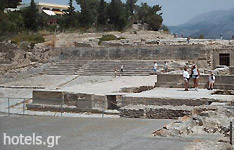
The Minoan Palace of Phaestos is the second largest after Knossos covering an area of 18,000 sq m and is built on a hill to the western end of the Messara plain. Phaestos was ruled by Radamanos, brother of Minos and is estimated to have been built around 1900 BC, but was destroyed 200 years later by an earthquake. A new larger palace was built which was destroyed in 1450 BC, possibly by the eruption of the volcano of Santorini.
Excavations of the site began in 1884 by the Italians, Halbherr and Taramelli. After the establishment of the Cretan state in 1898 further excavations were made by Halbherr and Pernier, 1900-1914. Later excavations were undertaken by Doro Levi, 1950-1971 overseen by the Italian Archaeological School of Athens. Some reinforcement has been done with concrete and covered in part with plastic sheeting.
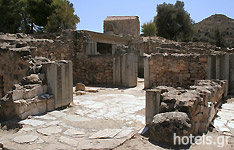
The Royal Villa of Agia Triada is located 3 km from Phaestos and 64 km from Heraklion. It was built on a hill around 1600 BC and is a fine example of Minoan architecture. It is believed to have been used as a summer palace by the king of Phaestos. It was destroyed around 1400 BC. The most important of the relics found was a sarcophagus during one of the excavations on the site from 1902 onwards.
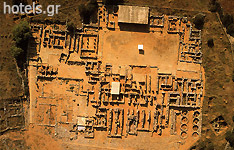
The Minoan Palace at Malia was not as elaborate as Knossos. The site has been occupied from Neolithic times and inhabited from 3rd millennium up to the prehistoric period. Its location shows that it was important for naval and trading activities. The palace was destroyed about 1450 BC. Excavations began in 1915.
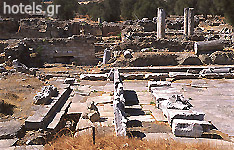
The site of Gortyna was inhabited for the first time towards the end of the Neolithic period, but its development is from after the Minoan period. Relics of the archaic period were found in the area of the Acropolis. According to the Laws of 5th century BC, the development of the town continued into the Hellenic period.
During the Roman occupation Gortyna became an ally of Rome and was the capital of Crete. It was total destroyed by the Saracens in 824 AD.
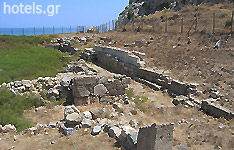
The habitation of the village of Paleohora, Amnissos, began during the middle Minoan period, about 1900 BC. The name of Amnissos is referred to in the Linear B tablets. The villa of the Lilies was destroyed by fire in 15th century BC, as were the other places of the Minoan period, probably by the catastrophic explosions of the volcano of Santorini..
The complexes C and E continued to be inhabited up to 12th century BC. During the 7th century BC the Temple of Dios Themata was founded and continued to be used until 2nd century AD. The hill was again occupied during the Venetian period.

Exact, partial, brief, paraphrased or adapted reproduction or republication of the contents and design of this website by any means
mechanical, electronic, photocopied or otherwise without previous authorisation from the legal owner is strictly forbidden.
Copyright © 1994 - 2025 www.greekhotels.gr (KAVI CLUB S.A. - Travel Services in Greece)
Find your hotel.
Type the name, select from the list and click go.
Hotels and Apartments in Crete